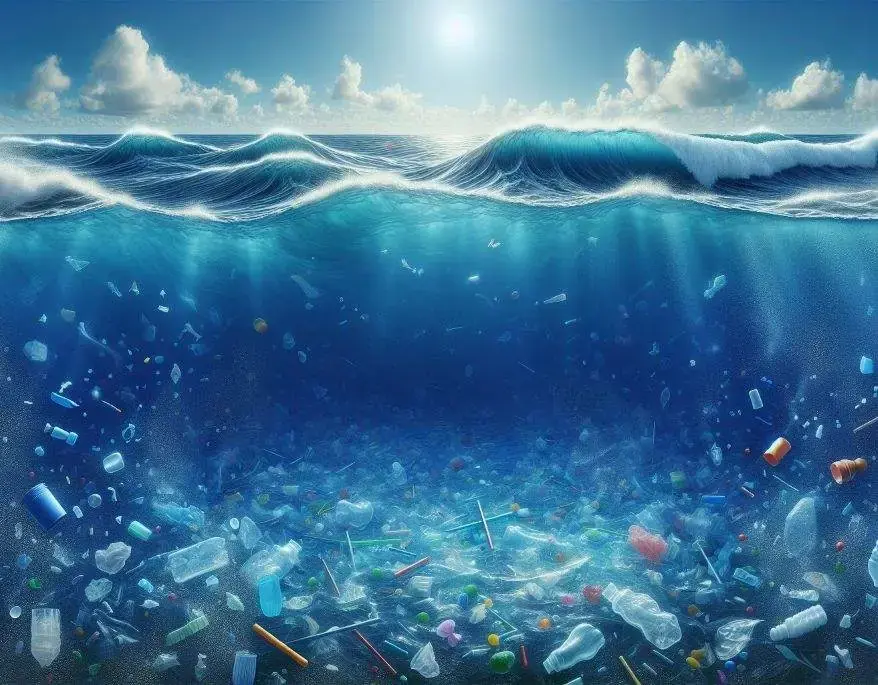Plastic Pollution: Growing Threat of Nanoplastics in the North Atlantic Ocean
Ocean plastic pollution is a major environmental problem, but what we can see is only part of the story. A significant portion of plastic debris breaks down into microscopic particles called nanoplastics, particles smaller than 1 micrometer. These tiny particles are nearly invisible to the naked eye, making them incredibly difficult to study and posing a significant challenge to our understanding of their impact on marine life and even human health. Recently, scientists uncovered startling findings about the widespread distribution of these nanoplastics.
A Global Nanoplastic Problem
Ubiquitous Presence Across the Atlantic
A recent research cruise across the North Atlantic Ocean revealed the shocking truth: nanoplastics are virtually everywhere. The researchers employed advanced mass spectrometry techniques to identify and quantify these tiny plastic particles within water samples collected across the North Atlantic. Scientists collected water samples from various depths, from the surface to the ocean floor. The results? They found nanoplastics made of polyvinyl chloride (PVC), polyethylene terephthalate (PET), and polystyrene (PS) in nearly every sample. This discovery demonstrates the pervasive nature of ocean plastic pollution. Thus, extending far beyond the visible macro- and microplastics we often associate with the problem.
The Scale of the Problem: 27 Million Tons of Nanoplastics
The study focused on the North Atlantic Ocean, where researchers found approximately 27 million tons of nanoplastics. This is a staggering amount, far surpassing the estimated quantities of larger microplastics and macroplastics combined. Furthermore, this finding helps explain the missing plastic paradox, where scientists couldn’t account for all the plastic produced. A significant portion, it seems, exists as these microscopic particles.
The Impact: Environmental and Human Health Risks
The implications of this discovery are far-reaching. Nanoplastics, due to their size, can easily penetrate biological tissues, potentially causing significant harm to marine organisms. Moreover, evidence suggests that these particles can even enter the human body and accumulate in organs, including brain tissue.
The Pathways of Nanoplastic Pollution: Understanding the Sources
Nanoplastics enter the ocean through various routes. Some originate from the breakdown of larger plastics under sunlight, while rivers transport others directly into marine environments. Surprisingly, a considerable amount also travels through the atmosphere, falling into the ocean via rain or direct deposition. These findings highlight the ubiquitous nature of ocean plastic pollution and its far-reaching impact.
Concentrations Vary by Location and Depth
While nanoplastics were present throughout the water column, concentrations varied depending on location and depth. Higher concentrations were found closer to coastlines, indicating that land-based sources contribute significantly to marine pollution. Furthermore, the study indicated that concentrations differed at various depths; the mixed layer (surface waters) contained the highest concentrations, with levels decreasing with depth. This suggests that various factors control the distribution of nanoplastics in the ocean, including ocean currents, wave action, and biological processes. Interestingly, certain types of nanoplastics, like PET, remained relatively abundant even at great depths.
The Challenges of Studying Nanoplastics
The Invisible Enemy
One of the biggest hurdles in understanding nanoplastics is their size. Their microscopic nature makes them incredibly difficult to sample and analyze, significantly limiting our understanding of their distribution, concentration, and ecological effects. Current methods are still under development. This lack of comprehensive data makes it difficult to assess the full extent of the environmental impact and potential health risks.
Uncertain Impacts and Future Research
Although the long-term effects of nanoplastics on marine life and ecosystems are still being researched, their potential for harm is significant.
Scientists suspect that they may disrupt marine ecosystems in many ways, including affecting feeding and respiration in marine organisms. More research is needed to fully understand the complex interactions between nanoplastics and the marine environment, to design effective mitigation strategies, and to better inform policies. Consequently, further research is crucial to address the growing concern surrounding nanoplastic pollution.
The discovery of pervasive nanoplastics highlights the urgent need for continued research and innovative solutions to tackle plastic pollution.
Reference
- Hietbrink, S. T., Materić, D., Holzinger, R., Groeskamp, S., & Niemann, H. (2025). Nanoplastic concentrations across the North Atlantic. Nature, 643(8071), 412–416. https://doi.org/10.1038/s41586-025-09218-1
Additionally, to stay updated with the latest developments in STEM research, visit ENTECH Online. Basically, this is our digital magazine for science, technology, engineering, and mathematics. Furthermore, at ENTECH Online, you’ll find a wealth of information.






